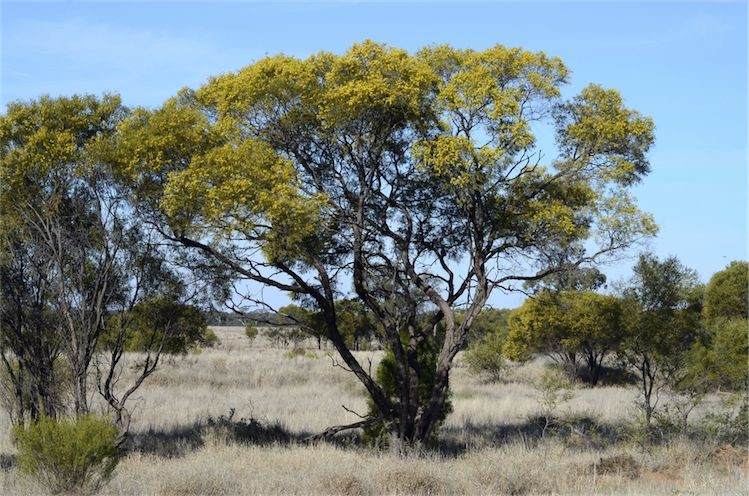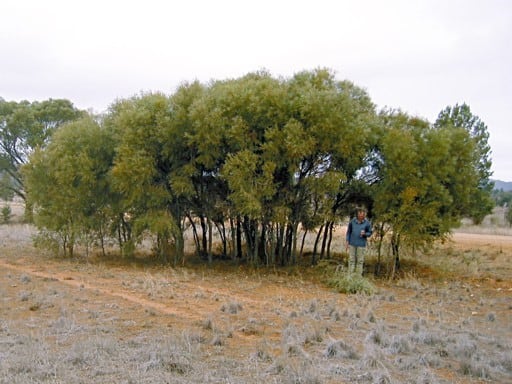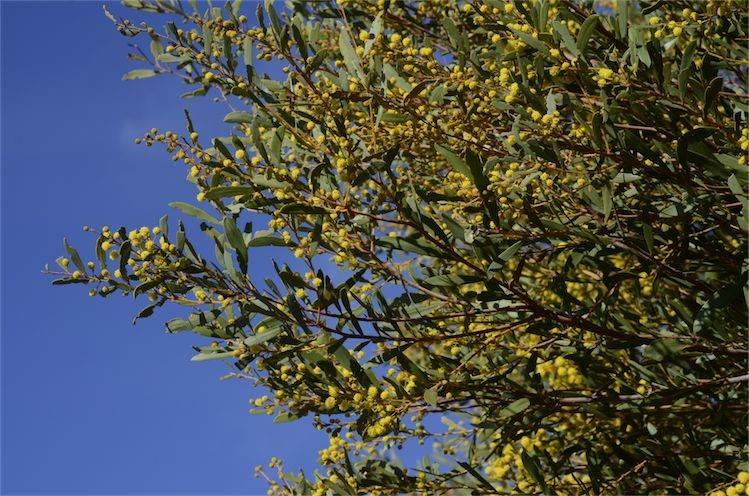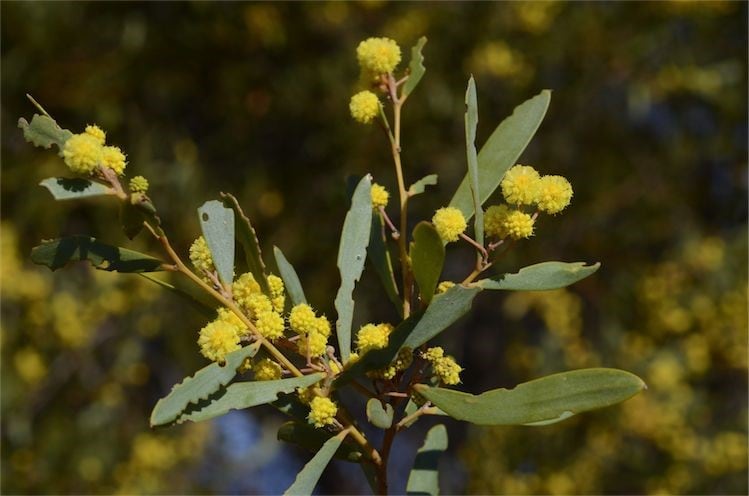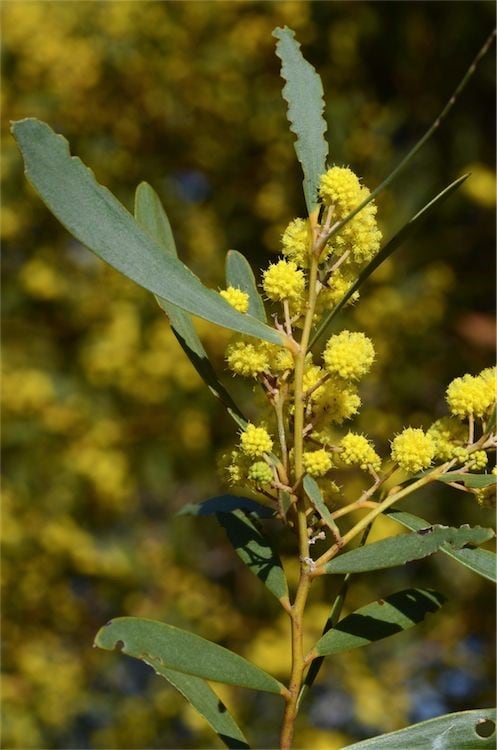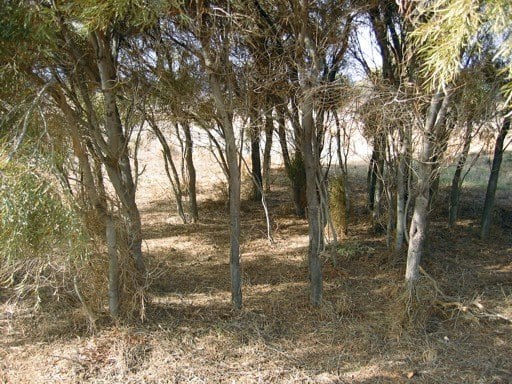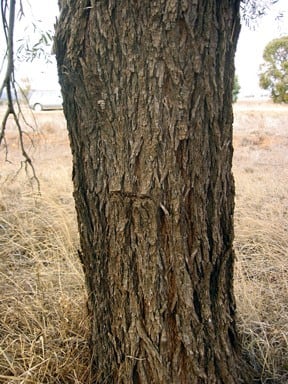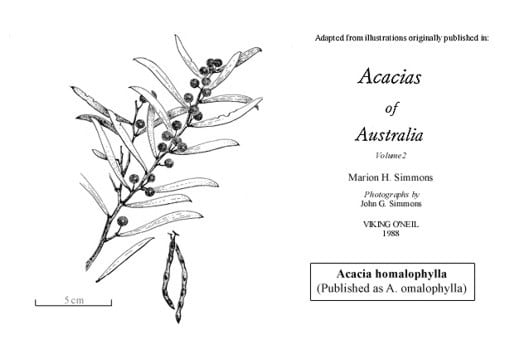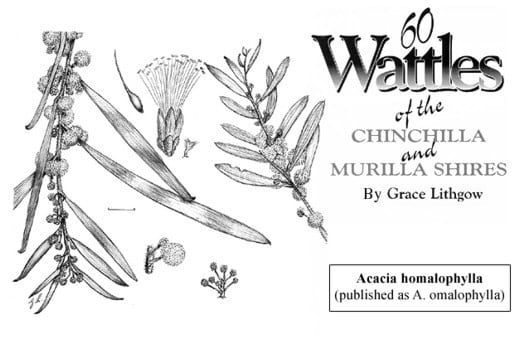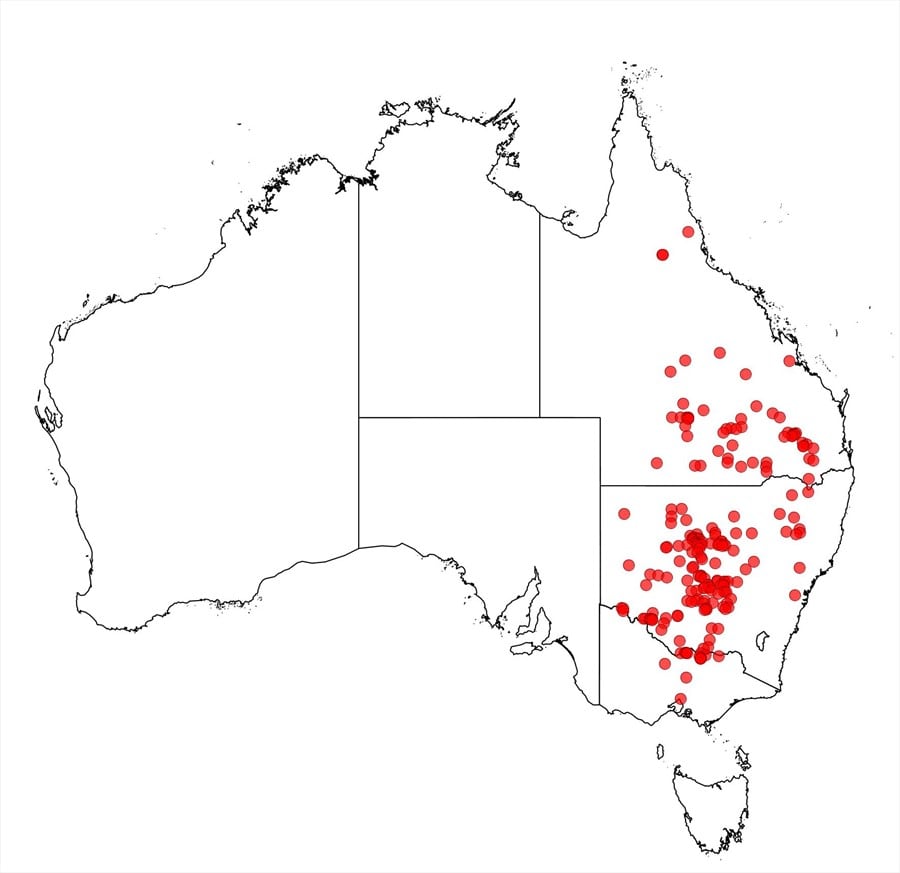Acacia homalophylla A.Cunn. ex Benth.
WATTLE
Acacias of Australia
Common Name
Yarran
Family
Fabaceae
Distribution
Widespread, occurring in central southern Qld S from between Yaraka and Duaringa; also occurring across the north and central western slopes and western and far western plains of central N.S.W., just crossing the Murray R. into Vic.
Description
Tree 5–10 m high. Branchlets angular at extremities, sparsely appressed-puberulous or glabrous. Phyllodes narrowly elliptic-oblong, straight or slightly curved, 4–11 cm long, (3–) 4–7 (–13) mm wide, curved-acute, coriaceous, glabrous or minutely appressed puberulous, with numerous closely parallel obscure nerves. Inflorescences 2- or 3-headed racemes; raceme axes 1–5 mm long; peduncles 2–5 mm long, sparsely to densely appressed-puberulous; heads globular, 4–5 mm diam., 20–30-flowered, golden; bracteoles oblong to obovate. Flowers 5-merous; sepals 1/3–2/3-united. Pods linear, slightly raised and irregularly constricted between seeds, straight to slightly curved, to 9 cm long, 3–5 mm wide, chartaceous or coriaceous, longitudinally nerved, ±glabrous; margins thickened. Seeds longitudinal, broadly elliptic, 3–5 mm long, dark brown; aril small, apical.
Habitat
Grows in Belah (Casuarina cristata) communities in brown soils with calcareous nodules, in Bimble Box (Eucalyptus populnea) open woodland in red earth and in various other soil and semi-arid vegetation types.
Specimens
Qld: E of Adavale towards Charlesville, M.E.Ballingall 2164 (BRI, PERTH); Blue Bell Gully Ck, N of Springsure, B.O’Keeffe 855 (BRI, PERTH). N.S.W.: 25.7 km N of Cobar, N.T.Burbidge 6594 (PERTH). Vic.: c. 35 km NW of Wangaratta, J.Hawker for N.G.Walsh 2079 (PERTH).
Notes
G.Bentham originally described this species as A. omalophylla, but in Fl. Austral. 2: 383 (1864) he corrected it to A. homalophylla, a more etymologically correct form, fide N.Hall & L.A.S.Johnson, The Names of Acacias of New South Wales (1993). R.S.Cowan and B.R.Maslin, Fl. Australia 11B: 113 (2001) followed L.Pedley, Austrobaileya 1: 200 (1978), in adopting the spelling A. omalophylla, but the etymologically correct form is now adopted.
Closely related to A. melvillei which has broader pods with transverse seeds, generally larger flower-heads and commonly broader phyllodes. These two species seem related to A. pendula which has densely appressed-puberulous phyllodes, pendulous branches and winged pods.
FOA Reference
Data derived from Flora of Australia Volumes 11A (2001), 11B (2001) and 12 (1998), products of ABRS, ©Commonwealth of Australia
Author
Revised by B.R.Maslin
B.R.Maslin
R.S.Cowan
This identification key and fact sheets are available as a mobile application:
URL: https://apps.lucidcentral.org/wattle/
© Copyright 2018. All rights reserved.
